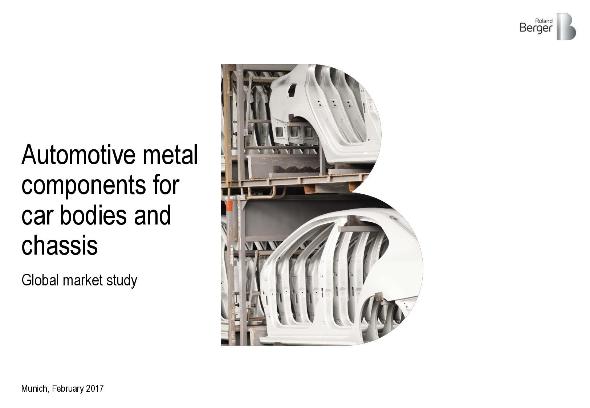Metal components for car bodies and chassis
![{[downloads[language].preview]}](https://www.rolandberger.com/publications/publication_image/cover_roland_berger_global_automotive_stamping_study_e_20170210_page_001_download_preview.jpg)
In the automotive industry there is much hype about mobility services, autonomous driving, digitization, and electric powertrains


In the automotive industry there is much hype about mobility services, autonomous driving, digitization, and electric powertrains. We want to encourage the industry not to forget the basics. Vehicles of the future, whether electric or not, will still require basic parts such as wheels, seats, chassis and bodies. This study looks at automotive trends and assesses their impact on the stamped component market and key market players.
We investigated the development of stamped components in the body in white (BIW) and chassis. We expect the market for stamped components will grow from EUR 103 bn (2015) to EUR 127 bn (2025) and the addressable market for suppliers from EUR 43 bn to EUR 63 bn.
Hot stamping is expected to become the industry standard for structural body components. Therefore, leading suppliers need to offer their technology portfolio globally. Smaller market players, on the other hand, should focus on specific products and customers.
We identify seven key automotive trends for the coming decade, among them - regulations for emission and recycling. Emission regulations put increased pressure on automotive OEMs to improve CO2 levels, fuel efficiency and exhaust gas emissions, while recycling and the pressure to reuse vehicles is likely to grow in coming years. One reason for this is that stricter EU end-of-life targets have been in place since 2015.
However, weight reduction and safety are the key factors impacting the market. Past initiatives to improve vehicle safety have already led to major changes in material use and BIW component design. We analyze the concrete relevance of these factors for the BIW and chassis component market.
![{[downloads[language].preview]}](https://www.rolandberger.com/publications/publication_image/cover_roland_berger_global_automotive_stamping_study_e_20170210_page_001_download_preview.jpg)
In the automotive industry there is much hype about mobility services, autonomous driving, digitization, and electric powertrains